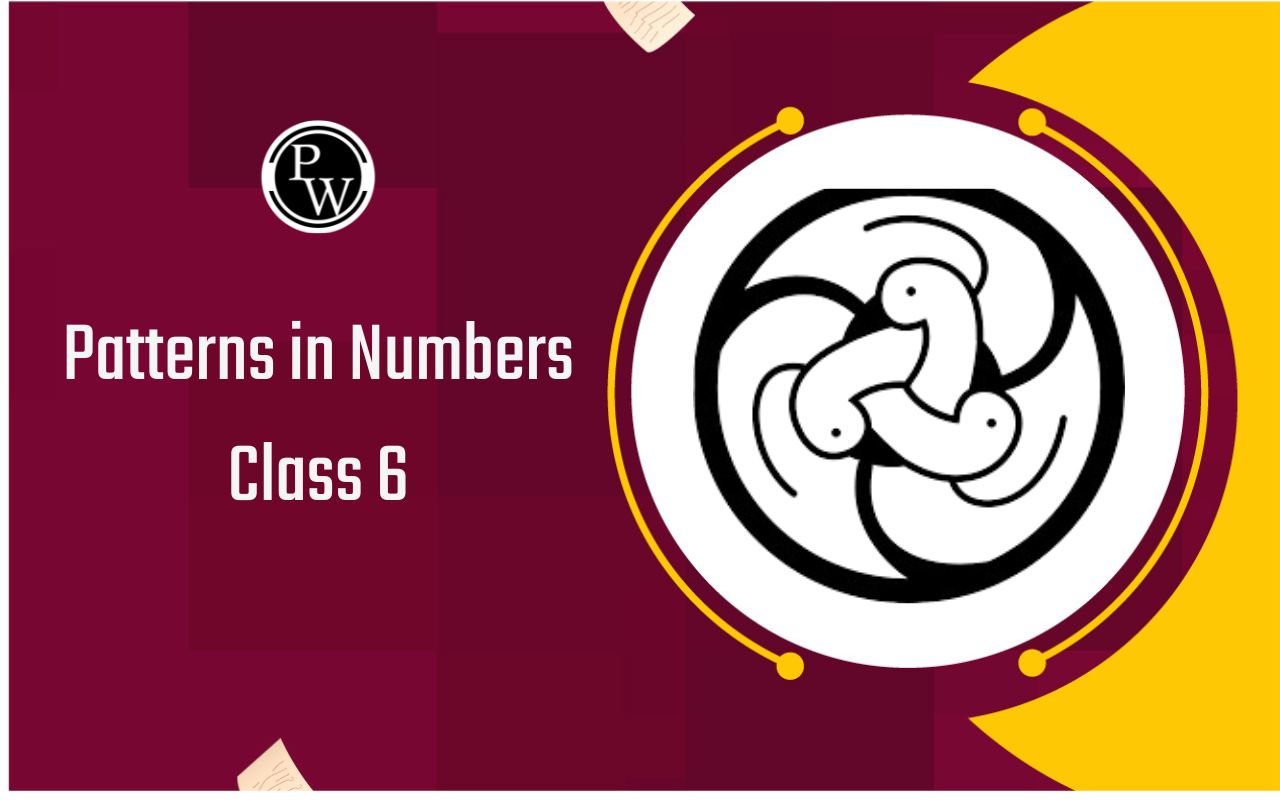
CBSE Class 6 Social Science History Notes Chapter 11: In Chapter 11 of the CBSE Class 6 Social Science History, titled "Buildings, Paintings, and Books," students learn about the rich cultural and architectural heritage of ancient India.
Students will learn about impressive structures like the Iron Pillar in Delhi and the beautiful temples of Mahabalipuram. The chapter also explains the ancient paintings that show us how people lived and what they valued. It covers important manuscripts and books that give us a glimpse into the past. These notes help students see the importance of these historical treasures and how they help us learn about ancient civilizations.CBSE Class 6 Social Science History Notes Chapter 11 Overview
CBSE Class 6 Social Science History Notes for Chapter 11 Buildings, Paintings, and Books are prepared by the subject experts of Physics Wallah. The notes are designed to present this information in a simple and clear way, helping students understand and remember the rich history and culture of ancient India.CBSE Class 6 Social Science History Notes Chapter 11 PDF
The PDF for CBSE Class 6 Social Science History Notes Chapter 11 Buildings, Paintings, and Books is available below. This PDF provides a detailed and easy-to-understand overview of the chapter, covering important topics such as ancient architecture, art, and literature. By accessing this PDF students can study these important historical elements at their own pace and ensure they grasp the important concepts of ancient Indian culture and history.CBSE Class 6 Social Science History Notes Chapter 11 PDF
CBSE Class 6 Social Science History Notes Chapter 11 Building, Paintings and Books
Below we have provided CBSE Class 6 Social Science History Notes Chapter 11 Building, Paintings and Books-The Iron Pillar and Ancient Architecture
The Iron Pillar in Mehrauli, Delhi, is a remarkable example of ancient Indian craftsmanship. Standing 7.2 meters tall and weighing over 3 tonnes, this iron pillar was made about 1500 years ago. It bears an inscription that mentions a ruler named Chandra, likely from the Gupta dynasty. One of the most impressive aspects of this pillar is that it has not rusted over the centuries, showcasing the exceptional skill of the artisans who created it. In addition to the Iron Pillar, ancient buildings like stupas reflect the advanced skills of builders from the same period. A stupa is essentially a mound, and there are various types, ranging from tall and round to large and small. At the center of each stupa was a small box, called a relic casket, which contained sacred items such as bodily remains of the Buddha or his followers, precious stones, and coins. This box was covered with earth and then layered with bricks or stone slabs to form a dome-like structure. The path around the stupa, known as the pradakshina patha, was surrounded by railings and decorated gateways, where devotees walked in a clockwise direction as a sign of reverence. Railings and gateways often featured intricate sculptures. During this time, some of the earliest Hindu temples were also constructed. These temples were dedicated to deities like Vishnu, Shiva, and Durga. The most sacred part of the temple was the garbhagriha, or inner sanctum, where the deity's image was placed, and priests performed rituals. Above the garbhagriha, a tower called the shikhara was built, and the temple also included a mandapa, or hall, for congregational gatherings.Recording and Preserving Old Stories
During ancient times, many important Hindu religious stories were written down, especially in the Puranas, which means "old." The Puranas include tales about various gods and goddesses like Vishnu, Shiva, Durga, and Parvati. They also provide instructions on how to worship these deities. Unlike the Vedas, which were only studied by a select group, the Puranas were written in simple Sanskrit verse. They were intended to be accessible to everyone, including women and Shudras, who were not allowed to study the Vedas. Priests likely recited these texts in temples, and people would come to listen and learn from them. Two famous Sanskrit epics from this period are the Mahabharata and the Ramayana . The Mahabharata narrates the story of a great war between two groups of cousins, the Kauravas and Pandavas. The Ramayana tells the tale of Rama, a prince who was exiled from his kingdom. His wife, Sita, was kidnapped by Ravana, the king of Lanka, and Rama had to fight a fierce battle to rescue her. The Ramayana was written by the sage Valmiki. These epics are not just stories but also reflect the values and beliefs of the time.Stories Told by Ordinary People
Ordinary people also played a crucial role in preserving cultural stories and traditions. They composed poems, songs, and dances, and performed plays. Many of these stories were collected and written down in famous compilations like the Jatakas and the Panchatantra . The Jatakas are tales of the previous lives of the Buddha, while the Panchatantra consists of fables with moral lessons. Some of these stories were depicted on the railings of stupas and in paintings at places like Ajanta, providing a glimpse into the everyday lives and beliefs of people from that time.Writing Books on Science
During this period, significant advancements were made in science. Aryabhata, a renowned mathematician and astronomer, wrote a book called the Aryabhatiyam in Sanskrit. In his work, he explained that day and night are caused by the Earth's rotation on its axis, even though it appears that the sun rises and sets. Aryabhata also provided scientific explanations for eclipses and developed methods to calculate the circumference of a circle, showcasing the scientific progress of his time.Important Questions for CBSE Class 6 Social Science History Notes Chapter 11 Building, Paintings and Books
Here are the important questions and answers of Chapter 11 for Class 6 students:Q.1. What are epics? Mention two famous Tamil epics which were written around 1800 years ago.
Answer: Epics are grand, lengthy compositions that narrate the adventures of heroic individuals and include tales about gods and divine beings. They often convey moral lessons and reflect the values of their time. Two famous Tamil epics from around 1800 years ago are:
- Silappadikaram: Composed by the poet Ilango, this epic tells the tragic story of Kovalan, a merchant from Puhar, who falls in love with a courtesan named Madhavi, neglecting his loyal wife, Kannagi. Kovalan's life ends in tragedy when he is wrongfully accused of theft and executed in Madurai. Kannagi, driven by grief and anger, seeks vengeance and destroys the city of Madurai.
- Manimekalai: Written by the poet Sattanar, this epic continues the story of Kovalan and Madhavi’s daughter, Manimekalai. It explores her life and experiences, reflecting on themes of love, morality, and justice. The epic is significant for its portrayal of societal values and personal dilemmas.
Q.2. What are the main features of the Hindu temples built around 1800 years ago?
Answer: Hindu temples from around 1800 years ago had several notable features:
- Garbhagriha: This was the central and most sacred room of the temple where the image or idol of the chief deity was enshrined. It was considered the spiritual core of the temple where priests performed rituals and devotees offered worship.
- Shikhara: Above the garbhagriha, a towering spire called the shikhara was constructed. It symbolized the sacredness of the space and was a prominent feature of temple architecture, marking the temple's presence and significance.
- Mandapa: This was a pillared hall or pavilion in front of the garbhagriha where people could gather for religious ceremonies and communal activities. It served as a space for devotees to assemble and participate in worship and festivals.
Q.3. Write a short note on Silappadikaram.
Answer: Silappadikaram is a Tamil epic composed by the poet Ilango. It narrates the story of Kovalan, a merchant living in Puhar, who becomes infatuated with a courtesan named Madhavi. This relationship causes him to neglect his wife, Kannagi. The epic takes a tragic turn when Kovalan is falsely accused of theft by the court jeweller of the Pandya king in Madurai. He is unjustly sentenced to death. In her grief and rage, Kannagi proves Kovalan’s innocence and, devastated by the injustice, destroys the entire city of Madurai. The story reflects themes of love, betrayal, justice, and the power of righteous anger.
Q.4. What were Puranas? What do they contain?
Answer: The Puranas are ancient Hindu religious texts that were composed in Sanskrit. They were designed to be accessible to a wide audience, including those who were not learned in the Vedas, such as women and Shudras. These texts were recited in temples and included a variety of content:
- Mythological Stories: The Puranas contain detailed narratives about gods and goddesses, such as Vishnu, Shiva, and Durga. These stories explore the divine qualities, exploits, and interactions of these deities.
- Rituals and Worship: They provide guidelines on how to worship the deities and conduct religious rituals.
- Cosmology and Creation: The Puranas describe the creation of the universe, its structure, and the cycles of time.
- Genealogies and Histories: They also include accounts of royal dynasties and the historical context of different regions.
Q.5. What are the common features of stupas?
Answer: Stupas are significant structures in Buddhist art and architecture, and their common features include:
- Circular Base and Dome: Stupas have a circular base supporting a massive solid dome. This dome symbolizes the universe and serves as a focal point of meditation and reverence.
- Pradakshina Path: Encircling the stupa is a path called the pradakshina path. Devotees walk around this path in a clockwise direction as an act of devotion. The path is often surrounded by railings.
- Gateways: The entrance to the pradakshina path is through elaborately decorated gateways, known as toranas. These gateways often feature intricate carvings depicting scenes from the life of the Buddha and other religious symbols.
- Decorative Elements: Stupas are adorned with sculptures and carvings on their railings and gateways. These artistic elements illustrate various religious themes and narratives.
Benefits of CBSE Class 6 Social Science History Notes Chapter 11
- Easy Review: The notes provide a clear summary of important topics like the Iron Pillar, stupas, temples and famous epics. This makes it easier to review the material quickly.
- Highlights Key Facts: Important details about things like the features of stupas and temples or stories from epics are clearly highlighted, so you know what to focus on.
- Better Understanding: The notes give background information and context, helping you understand how historical buildings and stories fit into history. This is useful for answering questions.
- Improves Memory: The simple explanations help you remember important facts better, making it easier to recall them during the exam.
- Quick Revision: They offer a concise overview of Chapter 11, so you can revise important points quickly before the exam.
- Effective Study Strategy: The notes help you focus on the most important topics and develop a good study plan making your exam preparation more effective.
CBSE Class 6 Social Science History Notes Chapter 11 FAQs
What is the Iron Pillar, and why is it important?
What did Aryabhata contribute to science?
What is the significance of Ajanta caves?
How did the construction of stupas and temples reflect the society of that time?
What were the main themes of the Jatakas and Panchatantra?








